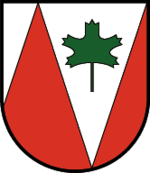Ferienwohnung Webhofer
Außervillgraten 155, Außervillgraten, Osttirol
Außervillgraten 155, Außervillgraten, Osttirol

Außervillgraten is a municipality with 739 inhabitants (as of January 1, 2022) in the district of Lienz in Tyrol, Austria. The municipality is located in the judicial district of Lienz. Außervillgraten is located in the Villgratental, a side valley of the East Tyrolean Pustertal at the confluence of the Villgratenbach and Winkeltalbach streams. The community is a distinct scattered settlement.
Culture and sights
Catholic parish church Außervillgraten hl. Gertraud: The parish church goes back to a predecessor church from the 14th century, which was replaced by a late Gothic new building in the 15th century. However, only foundation walls and the sacristy remained of this church after the baroque new building by Thomas Mayr at the end of the 18th century. The Widum was rebuilt after a fire in the 1920s. Like the parish church, the parish cemetery is a listed monument and has been occupied since the 14th century. It houses a cemetery chapel from 1832. Other monuments are the chapel of St. Genoveva (Bachlechenkapelle) built in 1765, the Mariahilfkapelle (Stöckl-Kapelle) from 1912. The only secular monument is the Wurzer farm, whose farmstead was mentioned in documents as early as 1433. The farmstead includes a chapel, a laundry, a flour mill and a sawmill. In addition to the listed buildings, Außervillgraten is also home to the Schupfer Chapel, built in 1954, the Ignatius Chapel, built in 1979, and the Antonius Stöckl, built in 1912/14. In addition, there are several other farms worth mentioning in Außervillgraten.
Bachlehen Chapel of St. Genoveva in Winkeltal
Wurzerhof: Single farm in Winkeltal, with laundry/chalice, saw, farm chapel of St. Catherine and flour mill.
With 2010 the carol singing in Villgratental was included in the Intangible World Heritage, as declared by UNESCO, in the Austria List (National Cultural Property).